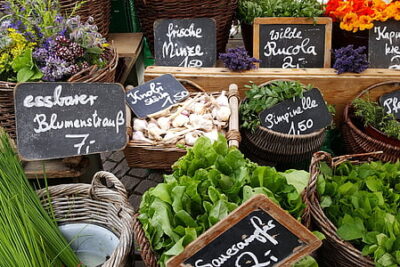
Proper Potting Techniques for Succulents: Optimal Growth Tips

Succulents have become incredibly popular in recent years, as they are known for their unique and beautiful appearance, as well as their low maintenance requirements. These plants are characterized by their thick, fleshy leaves and stems that store water, allowing them to survive in arid conditions. However, despite their reputation for being easy to care for, proper potting techniques are crucial for ensuring the optimal growth and health of succulents.
We will delve into the essential tips and techniques for potting succulents. We will discuss the importance of using well-draining soil and containers with drainage holes to prevent root rot. Additionally, we will explore the proper watering and sunlight requirements for these plants, as well as the best time to repot them. By following these guidelines, you will be able to create the ideal growing environment for your succulents and enjoy their beauty for years to come.
- Use well-draining soil to prevent root rot
- Choose a pot with drainage holes to avoid overwatering
- Place your succulent in a location with bright, indirect sunlight
- Allow the soil to dry out completely between waterings
- Fertilize your succulent with a diluted, balanced fertilizer during the growing season
- Repot your succulent every 1-2 years to refresh the soil and encourage growth
- Provide adequate airflow around your succulent to prevent disease
- Avoid overcrowding by giving your succulent enough space to grow
- Protect your succulent from extreme temperatures and frost
- Monitor for pests and take appropriate action if necessary
- Frequently Asked Questions
Use well-draining soil to prevent root rot
When it comes to potting succulents, using well-draining soil is crucial for their optimal growth. Succulents are known for their ability to store water in their leaves and stems, making them highly adapted to dry environments. However, this also means that they are susceptible to root rot if their soil retains too much moisture.
To prevent root rot, it is important to choose a potting mix specifically designed for succulents or cacti. These mixes are typically composed of a combination of materials such as coarse sand, perlite, and grit, which help improve drainage and aeration.
Key points to remember:
- Choose a well-draining soil mix specifically formulated for succulents.
- Look for ingredients like coarse sand, perlite, and grit in the mix.
- Avoid using regular potting soil, as it tends to retain too much moisture.
By using well-draining soil, you are creating an environment that mimics the succulents' natural habitat, allowing them to thrive and grow to their full potential.
 String of Fish Hooks Succulent: Quirky Garden Addition
String of Fish Hooks Succulent: Quirky Garden AdditionChoose a pot with drainage holes to avoid overwatering
When it comes to potting succulents, selecting the right container is crucial for their optimal growth. One of the most important factors to consider is choosing a pot with drainage holes.
Drainage holes allow excess water to escape from the pot, preventing water from accumulating and causing root rot. Succulents have a unique ability to store water in their leaves and stems, making them susceptible to overwatering. Without proper drainage, the excess water will remain trapped in the pot, leading to soggy soil and potentially damaging the plant's delicate roots.
So, when selecting a pot for your succulents, look for containers that have multiple drainage holes at the bottom. These holes will ensure that any excess water can easily escape, promoting healthy root development and preventing waterlogged soil.
Additionally, it's worth mentioning that using a pot that is slightly larger than the plant's root system is recommended. This allows room for growth and prevents overcrowding, which can inhibit the succulent's overall development.
Place your succulent in a location with bright, indirect sunlight
When it comes to keeping your succulents happy and thriving, one of the most important factors to consider is their exposure to sunlight. Succulents thrive in bright, indirect sunlight, so it's crucial to find the perfect spot for them in your home or garden.
Choose a location that receives plenty of natural light throughout the day but avoid placing your succulent in direct sunlight, especially during the hottest hours. Direct sunlight can scorch the leaves and cause irreparable damage to your plants.
An ideal spot for your succulent would be near a window facing east or west. This way, your succulent will receive ample sunlight, but it won't be exposed to the intense rays of the midday sun. If you don't have access to a window with east or west exposure, you can also use sheer curtains or blinds to filter the sunlight and create a more suitable environment for your plants.
 Choosing the Best Pebbles for Succulents: Quality and Drainage Factors
Choosing the Best Pebbles for Succulents: Quality and Drainage FactorsRemember, succulents are adaptable plants and can tolerate different light conditions to some extent. However, providing them with bright, indirect sunlight will ensure optimal growth and prevent any potential sunburn.
Allow the soil to dry out completely between waterings
When it comes to potting succulents, one of the most important factors to consider is the watering schedule. Succulents are drought-tolerant plants that store water in their leaves and stems, allowing them to survive in arid conditions. Therefore, it is crucial to let the soil dry out completely between waterings.
Overwatering can be detrimental to succulents, as it can lead to root rot and other issues. To ensure optimal growth and prevent water-related problems, it is recommended to water your succulents only when the soil is completely dry. This means waiting until the soil has completely dried out from the previous watering session.
One way to determine if it's time to water your succulents is by checking the moisture level of the soil. Stick your finger about an inch into the soil; if it feels dry, then it's time for watering. However, if it still feels moist, it's best to wait a little longer before giving your succulents a drink.
Remember, succulents have adapted to survive in dry conditions, so they prefer to be underwatered rather than overwatered. By allowing the soil to dry out completely between waterings, you are mimicking their natural habitat and promoting healthy growth.
Fertilize your succulent with a diluted, balanced fertilizer during the growing season
 Where to Find Stunning Succulent Garden Pictures: Seeking Inspiration
Where to Find Stunning Succulent Garden Pictures: Seeking InspirationProper fertilization is crucial for the optimal growth of your succulents. During the growing season, it is recommended to fertilize your succulents with a diluted, balanced fertilizer. This will provide them with the necessary nutrients to thrive and maintain their health.
When choosing a fertilizer, opt for a balanced one with equal amounts of nitrogen, phosphorus, and potassium. This will ensure that your succulents receive a well-rounded mix of nutrients, promoting overall growth and development.
It is important to dilute the fertilizer before applying it to your succulents. Mix the fertilizer with water according to the instructions on the packaging. Succulents have delicate root systems that can be easily damaged by excess fertilizer, so it is crucial to follow the recommended dilution ratio.
Apply the diluted fertilizer to the soil around the base of your succulent, avoiding direct contact with the leaves or stems. This will prevent any potential burning or damage to the plant. It is advisable to fertilize your succulents once every month during the growing season, from spring to early fall.
Remember to always water your succulents thoroughly before fertilizing. This will help prevent any potential fertilizer burn and ensure that the nutrients are evenly distributed in the soil.
Additionally, be mindful of the specific fertilizer requirements of different succulent varieties. Some succulents may require a specialized fertilizer blend or a different fertilization schedule. Research the specific needs of your succulents to ensure you provide them with the best care possible.
By following these proper potting techniques and fertilization tips, your succulents will have the ideal conditions for optimal growth. Enjoy the beauty and resilience of these fascinating plants as they thrive in their pots!
 Top Online Stores for Succulent Delivery: Buy & Deliver to Your Door
Top Online Stores for Succulent Delivery: Buy & Deliver to Your DoorRepot your succulent every 1-2 years to refresh the soil and encourage growth
Proper potting techniques are essential for the health and optimal growth of succulents. One important practice is to repot your succulent every 1-2 years. This allows you to refresh the soil, remove any excess salts or minerals, and provide your succulent with fresh nutrients.
When repotting your succulent, it is crucial to choose the right pot size. Opt for a pot that is slightly larger than the current one, allowing room for the succulent to grow. However, avoid using a pot that is too large, as this can lead to waterlogging and root rot.
Step 1: Prepare the new pot
Before repotting, prepare the new pot by ensuring it has drainage holes at the bottom. This is crucial to prevent water from pooling and causing root rot. Additionally, choose a well-draining potting mix specifically formulated for succulents. This type of mix allows excess water to drain away quickly, preventing soggy soil.
Step 2: Gently remove the succulent from its current pot
Carefully remove the succulent from its current pot by gently loosening the soil around the edges. You can use a small tool like a trowel or your fingers to do this. Be cautious not to damage the roots during this process.
Step 3: Inspect and trim the roots if necessary
 Step-by-Step Guide: How to Create a Stunning Succulent Terrarium
Step-by-Step Guide: How to Create a Stunning Succulent TerrariumOnce the succulent is out of the pot, inspect its roots for any signs of damage or rot. Trim off any unhealthy or dead roots using clean and sharp scissors or pruning shears. This will promote healthy growth and prevent potential diseases.
Step 4: Place the succulent in the new pot
Position the succulent in the center of the new pot, ensuring that it is at the same depth as it was in the previous pot. Gently backfill the pot with the well-draining potting mix, making sure to distribute it evenly around the roots. Lightly press the soil to secure the succulent in place.
Step 5: Allow the succulent to settle and water sparingly
After repotting, it is important to give the succulent some time to settle into its new environment. Avoid watering for a few days to allow any damaged roots to heal. When you do start watering, be sure to do so sparingly, as overwatering can lead to root rot.
Step 6: Monitor and care for your repotted succulent
Keep an eye on your repotted succulent and monitor its growth. Ensure it receives adequate sunlight, but avoid placing it in direct, intense sunlight, as this can lead to sunburn. Water the succulent only when the top inch of the soil feels dry, and be mindful not to drench the soil.
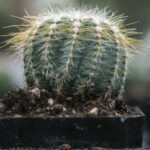 Succulent Pot Pictures: Inspiring and Stunning Designs
Succulent Pot Pictures: Inspiring and Stunning DesignsBy following these proper potting techniques, you can provide your succulents with the ideal growing conditions, promoting healthy growth and vibrant foliage. Remember to repot your succulents every 1-2 years to refresh the soil and encourage optimal growth.
Provide adequate airflow around your succulent to prevent disease
When it comes to succulent care, providing adequate airflow is crucial for preventing disease and promoting optimal growth. Succulents are known for their ability to store water in their leaves, stems, and roots, making them more susceptible to fungal and bacterial infections if not properly cared for.
To ensure proper airflow around your succulent, it is important to choose the right pot and potting medium. Opt for a pot with drainage holes to prevent water from accumulating and causing rot. Additionally, consider using a porous potting medium such as a well-draining succulent soil mix or a blend of perlite, sand, and regular potting soil.
When potting your succulent, make sure to leave enough space between plants. Overcrowding can limit airflow and create a humid environment that encourages the growth of pathogens. Aim to leave at least an inch of space between each succulent to allow for proper air circulation.
Furthermore, avoid placing your succulent in an area with stagnant air or high humidity. These conditions can increase the risk of fungal diseases such as powdery mildew or root rot. Instead, place your succulent in a well-ventilated area where air can freely circulate.
Regularly inspect your succulent for any signs of disease or pest infestation. Look for symptoms like yellowing or wilting leaves, fuzzy mold growth, or unusual spots. If you notice any issues, take immediate action to prevent the spread of disease. Isolate the affected plant and treat it with an appropriate fungicide or insecticide, if necessary.
Remember, proper airflow is essential for the overall health and well-being of your succulent. By following these tips and providing adequate ventilation, you can help prevent disease and ensure optimal growth for your succulent collection.
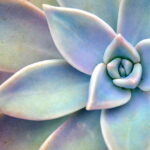 Where to Buy Affordable Succulents: A Guide to Low-Cost Options
Where to Buy Affordable Succulents: A Guide to Low-Cost OptionsAvoid overcrowding by giving your succulent enough space to grow
When it comes to potting succulents, one of the most important factors to consider is providing them with enough space to grow. Succulents have shallow roots and prefer well-draining soil, so it's crucial to choose a pot that allows for proper air circulation and prevents waterlogged conditions.
Overcrowding succulents in a small pot can lead to a variety of issues, such as root rot, stunted growth, and a weakened overall plant health. To avoid this, opt for a pot that is at least 1-2 inches wider than the diameter of the succulent's root system.
Additionally, consider the growth habits of the specific succulent species you are potting. Some succulents, like Echeverias, tend to produce offsets or "pups" that can eventually fill up the pot if not spaced appropriately. It's best to leave some room for these offsets to grow and develop into new plants.
Remember, giving your succulent enough space not only promotes optimal growth but also reduces the risk of diseases and pests that often thrive in crowded conditions.
Key tips:
- Choose a pot that is at least 1-2 inches wider than the succulent's root system
- Consider the growth habits of the specific succulent species
- Leave room for offsets or "pups" to grow and develop
- Avoid overcrowding to reduce the risk of diseases and pests
Protect your succulent from extreme temperatures and frost
 Find the Perfect Succulent Tool Kit for All Your Gardening Needs
Find the Perfect Succulent Tool Kit for All Your Gardening NeedsOne of the key factors in ensuring the optimal growth of your succulent is protecting it from extreme temperatures and frost. Succulents are naturally adapted to arid climates, and they thrive in warm and dry conditions. Therefore, it is crucial to shield them from any temperature extremes that might occur in your specific region.
Extreme heat can cause succulents to wilt, dry out, or even scorch. On the other hand, frost can be equally damaging, causing the leaves to discolor, become mushy, and eventually die. To safeguard your succulent from these potentially harmful conditions, follow these tips:
1. Choose the right location
When selecting a spot for your succulent, consider its hardiness zone. Different succulent species have varying tolerance levels for temperature extremes. Research the specific requirements of your succulent and find a suitable location in your garden or home.
2. Provide shade during scorching heat
During intense heatwaves or prolonged exposure to direct sunlight, it is important to provide some shade for your succulent. This can be achieved by placing it under a shade cloth, an awning, or even moving it indoors temporarily. This protection will prevent the plant from overheating and potentially experiencing sunburn.
3. Insulate during frosty weather
When frost is predicted, it is crucial to protect your succulent from the freezing temperatures. Cover it with a frost cloth, burlap, or even bring it indoors if possible. Remember to remove the covering during the day to allow sunlight to reach the plant.
4. Mulch for insulation
Applying a layer of organic mulch around the base of your succulent can help insulate it during extreme temperatures. The mulch acts as a protective barrier, keeping the roots cool during hot weather and providing some insulation against frost in colder conditions.
5. Avoid overwatering
Overwatering can make succulents more vulnerable to temperature fluctuations. Excess moisture in the soil can lead to root rot and weaken the plant's ability to withstand extreme temperatures. Ensure you follow proper watering practices for succulents, allowing the soil to dry out between waterings.
 DIY Succulent Wreaths: Create Stunning Decorative Wreaths at Home
DIY Succulent Wreaths: Create Stunning Decorative Wreaths at HomeBy taking these precautions, you can help your succulents stay healthy and thrive, even in challenging temperature conditions. Remember to monitor the weather forecast and adjust their care accordingly. With proper protection, your succulents will reward you with their vibrant and resilient growth.
Monitor for pests and take appropriate action if necessary
One of the key aspects of proper potting techniques for succulents is to regularly monitor your plants for pests. Pests can be detrimental to the health and growth of your succulents if left untreated. By keeping a close eye on your plants, you can catch any pest infestations early on and take appropriate action to prevent further damage.
Here are some common pests to watch out for:
- Mealybugs: These small, white, cotton-like insects often hide in the nooks and crannies of succulent leaves. They suck the sap from the plants, causing them to weaken and become susceptible to other diseases.
- Aphids: These tiny, pear-shaped insects can be found on the undersides of succulent leaves. They feed on the plant's sap and can cause stunted growth and distorted foliage.
- Spider mites: These minuscule pests are difficult to spot with the naked eye. They spin fine webs on the leaves and suck the plant's juices, causing yellowing and wilting.
- Scale insects: These pests are often found on the stems and leaves of succulents. They appear as small, raised bumps and can cause yellowing, wilting, and leaf drop.
If you notice any signs of pest infestation, such as sticky residue, distorted foliage, or visible pests, it's important to take immediate action. Here are some steps to effectively deal with pests:
- Isolate the affected plants: If you have multiple succulents, it's crucial to isolate the infested plants to prevent the pests from spreading to other healthy plants.
- Remove pests manually: For larger pests like mealybugs or scale insects, you can carefully remove them using tweezers or a cotton swab dipped in rubbing alcohol. Be gentle to avoid damaging the plant.
- Use organic pest control: If the infestation is severe, you may need to resort to organic pest control methods. Neem oil or insecticidal soap can be sprayed on the affected plants to kill the pests.
- Maintain good cultural practices: Prevention is key when it comes to pest control. By providing your succulents with proper care, including adequate sunlight, well-draining soil, and appropriate watering, you can help them develop strong defenses against pests.
Remember, regular monitoring and proactive pest control measures are essential for maintaining the optimal growth of your succulents.
Frequently Asked Questions
 Discover the Best Low-Maintenance Succulents for Your Office Décor
Discover the Best Low-Maintenance Succulents for Your Office Décor1. How often should I water my succulents?
Succulents have low water needs and should be watered only when the soil is completely dry, usually once every 1-2 weeks.
2. What type of soil is best for succulents?
Succulents thrive in well-draining soil that is specifically formulated for cacti and succulents. Avoid using regular potting soil, as it retains too much moisture.
3. Can I use any type of pot for my succulents?
It is recommended to use pots with drainage holes to prevent water from pooling at the bottom. If you prefer using pots without drainage, be extra cautious with watering to avoid overwatering.
4. How much sunlight do succulents need?
Succulents require bright, indirect sunlight for at least 6 hours a day. Place them near a south or east-facing window to ensure they receive adequate light.
If you want to read more articles similar to Proper Potting Techniques for Succulents: Optimal Growth Tips, you can visit the Planters and Arrangements category.

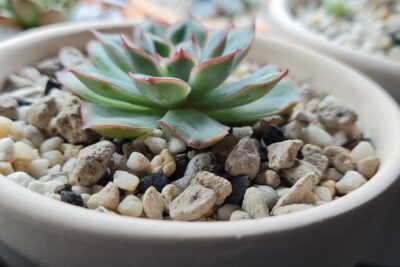
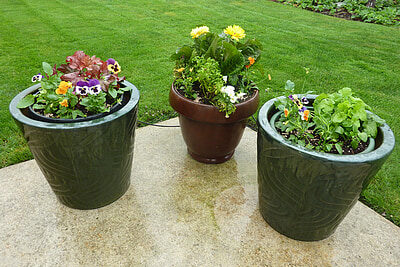

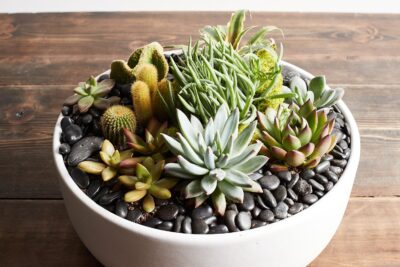
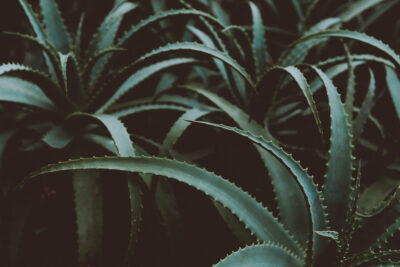
You Must Read